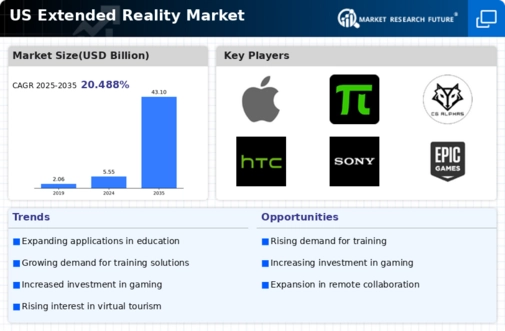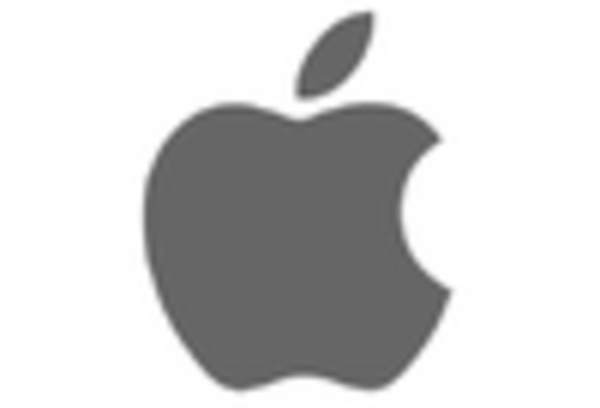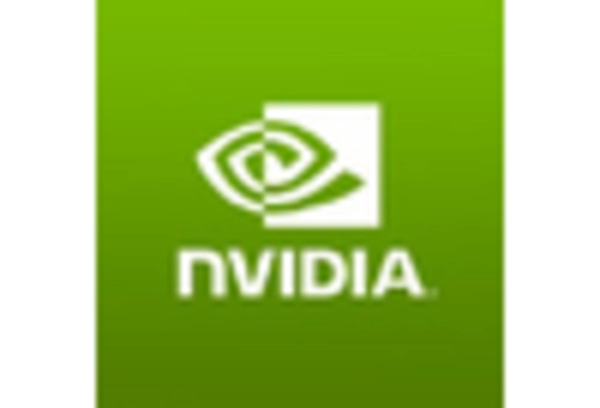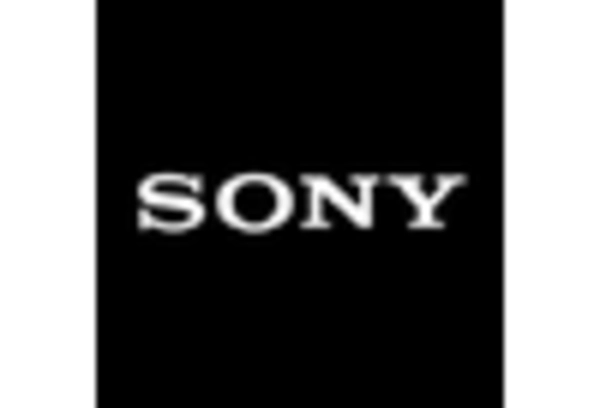Technological Advancements in Hardware
The extended reality market is experiencing a surge in technological advancements in hardware, which is likely to enhance user experiences significantly. Innovations in headsets, sensors, and displays are making extended reality applications more immersive and accessible. For instance, the introduction of lightweight, high-resolution headsets is expected to drive adoption across various sectors, including education and entertainment. As of 2025, the market for augmented reality (AR) and virtual reality (VR) hardware is projected to reach approximately $30 billion in the US. This growth indicates a robust demand for advanced hardware solutions, which are essential for the extended reality market to thrive.
Increased Focus on Healthcare Solutions
The extended reality market is experiencing a heightened focus on healthcare solutions, which is likely to revolutionize patient care and medical training. Healthcare professionals are utilizing AR and VR technologies for surgical simulations, patient education, and therapeutic applications. As of 2025, the healthcare segment is expected to represent a substantial portion of the extended reality market, with projections indicating a growth rate of around 30% annually. This trend underscores the potential of the extended reality market to enhance medical practices and improve patient outcomes, making it a critical area of investment and development.
Integration of Extended Reality in Education
The integration of extended reality technologies in education is emerging as a pivotal driver for the extended reality market. Educational institutions are increasingly adopting AR and VR solutions to create immersive learning experiences that enhance student engagement and retention. By 2025, the educational segment of the extended reality market is expected to account for nearly 20% of the total market share in the US. This shift suggests that educators recognize the value of experiential learning, which could lead to a more profound understanding of complex subjects. Consequently, the extended reality market is likely to see substantial growth as educational applications become more prevalent.
Growing Demand for Remote Collaboration Tools
The extended reality market is witnessing an increasing demand for remote collaboration tools, particularly in the wake of evolving workplace dynamics. Companies are seeking innovative solutions to facilitate virtual meetings and collaborative projects, which has led to the development of extended reality applications that enhance remote interactions. The market for such tools is anticipated to grow by over 25% annually, reflecting a shift towards more interactive and engaging virtual environments. This trend is indicative of the extended reality market's potential to transform how businesses operate and communicate, making it a critical driver of growth.
Expansion of Gaming and Entertainment Applications
The gaming and entertainment sectors are significantly contributing to the growth of the extended reality market. With the rise of immersive gaming experiences, developers are increasingly leveraging AR and VR technologies to create engaging content. The gaming segment alone is projected to generate revenues exceeding $15 billion by 2025, highlighting the lucrative opportunities within the extended reality market. This expansion is not only attracting gamers but also enticing content creators and investors, thereby fostering a vibrant ecosystem that supports innovation and creativity in the extended reality space.
















